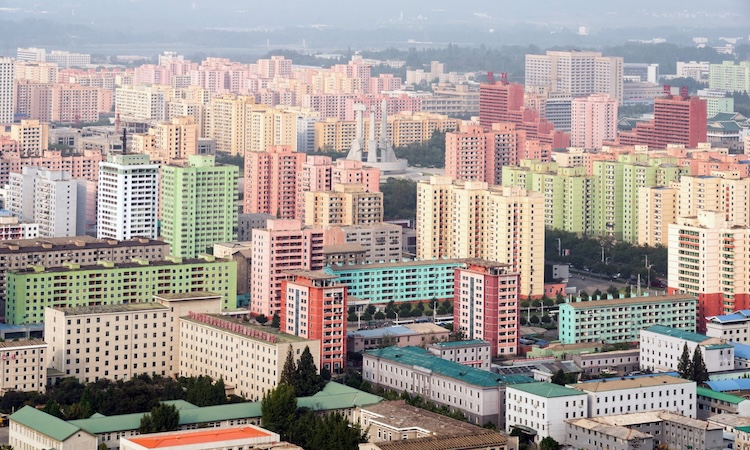Given the general, rising (and totally justified) levels of distrust in the British and US media and governments, it is not surprising to see a strong current of discussion on alternative media questioning all aspects of the official narrative regarding the coronavirus pandemic.
In this article, we address the most fundamental of these: whether Covid-19 is indeed a real pandemic that threatens human life on a vast scale, or is really just another flu whose threat has been magnified by imperialist states in order to disguise the causes of the economic crisis, justify a bailout of big business, and provide cover for passing yet another raft of repressive anti-worker legislation.
What is coronavirus?
A virus is an infective agent that hijacks the metabolism of the host cell to reproduce itself, and in so doing produces its symptoms. It consists of a protein coat, containing a few proteins and the genetic material to code for its reproduction (DNA or RNA). Those new viral particles are then released from the cell and expelled into the environment (to infect others) or go on to infect adjacent cells of like kind within the same organic tissue of that host (worsening the condition of the same).
Coughs, colds and the common flu are all airborne viruses. The coronavirus affects the upper airway and the lungs, producing fever, cough, aching joints and headache. For young and fit people, it may cause no symptoms whatsoever, but one may nevertheless infect others before getting symptoms, so its spread is difficult to control.
It is more dangerous than the flu, but its effects vary. The elderly, especially those over the age of 80, are most severely affected. Those with other illnesses (diabetes, heart and lung problems, immune problems and chronic medical conditions) are most affected. Men are more severely affected than women.
The sparing of the young and the relative sparing of women is most likely due to their relative under-expression of the ACE-2 receptor, which in the case of Covid-19 is the surface receptor protein by means of which the virus gains access to the lung’s cells. Around 5 percent of the infected population seem to develop a severe viral pneumonia, requiring oxygen, and a proportion of these will need ventilation in hospital to survive.
The virus seems to have originated in Wuhan, China – or at least, it was first identified as a new disease there.
The Chinese people and government have done an amazing job of combating the infection. They recognised the new virus, decoded its genetic structure and shared it with the world, and developed anti-viral medical treatment that is effective.
They threw up hospitals for those requiring oxygen therapy and for those requiring ventilation. Frontline medical staff heroically battled the virus. Extraordinary public health measures were taken to contain the virus, including testing 1.6 million people a day, rigorous contact tracing and isolation of infected and potentially infected citizens, providing sufficient ventilatory support and ITU beds, and closing down inter-state transport and social functions.
First appreciation of a novel virus
“In December 2019, a local outbreak of pneumonia of initially unknown cause was detected in Wuhan (Hubei, China), and was quickly determined to be caused by a novel coronavirus, namely severe acute respiratory syndrome coronavirus 2 (SARS-CoV-2). The outbreak has since spread to every province of mainland China…”, and subsequently has been identified throughout the nations of the world. (The Lancet, 19 February 2020)
Charting the spread of Covid-19
The World Health Organisation (WHO), after declaring Covid-19 a global health emergency on 30 January 2020, went on to declare it a world pandemic, with Europe as the global epicentre on 12 March.
The Chinese government, collaborating with international institutions, including the WHO and Johns Hopkins university in the USA, initiated a coordinated global effort to share information about the epidemiology of the evolving outbreak. These widely available and daily updated figures chart the relentless spread of the virus across the globe.
In a matter of a few short weeks, the novel coronavirus transformed from a worrying but apparently distant ‘Chinese’ phenomenon into a major pandemic affecting the whole world.
Graphical depictions of the number of people being diagnosed with Covid worldwide, having tested positive, alongside numbers of people who have died from the disease, show that we are still in the exponential growth phase of the pandemic, with ongoing propagation of the virus throughout the world’s population. (
Thus, at the present moment, all the public health measures taken – on a world scale – have failed to check its spread. Even the limited data available makes it clear that there are, however, individual national success stories – most notably in China itself, where the total numbers of cases have remained static at around 82,000 (0.005 percent of the Chinese population) owing to the extraordinary and timely public health measures put in place to contain it.
Notable for having mitigated the impact of infection to varying degrees, with respect to comparable neighbours, are Vietnam, Korea, Singapore and Germany. Vietnam, in fact, has been among the first countries to begin to lift its lockdown restrictions (on 23 April) having reported zero deaths and less than 300 cases of coronavirus since the first one was identified in January. (Vietnam starts to lift lockdown measures after no deaths reported by Kate Ng, Independent, 23 April 2020)
Scale of the problem
At the time of publishing almost 3.5 million cases had been diagnosed by testing worldwide. Of these identified sufferers, 248,000 have died and 927,000 recovered, with the majority of the test-diagnosed patients still having active disease, although the majority of these are reported to be mild (97 percent) and a minority critical (3 percent).
Almost a third of all proven cases are in the United States of America, which has now declared 900,000 cases and 50,000 deaths from Covid-19, with the epicentre of the US outbreak being New York, which together with its environs accounts for half of the initial US death toll.
Sordid details of an increase in unmarked burials of New Yorkers on the mass burial grounds of Hart Island have starkly illustrated the point.
Low levels of testing outside China – where an impressive 1.6m tests were performed every week – with the exception of the relatively small nations of Korea and Singapore, and the larger central European state of Germany (which has managed to test 160,000 of its citizens a week) , means that we do not have accurate data for the true spread of the disease, which is likely to be at least ten times more widespread than test-diagnosed cases indicate.
The fact that testing is expensive and relies upon the existing health, industrial and scientific infrastructure will also mean that we will perhaps never know the extent of the infection throughout much of the oppressed world. Again, this fact highlights the egregiously uneven development of global monopoly capitalism in 2020, in what can only be described as its decaying imperialist stage.
Impact in the ‘third world’
The obscene levels of poverty throughout the exploited world are well illustrated by the fact that “for many children in the global south – 85 million in Latin America and the Caribbean alone – school closures mean no more school meals. Which in turn (in some African households in particular) means an end to the only hot meal anyone among family members would get in a day.
“Already before the coronavirus crisis, more than 820 million people went to bed hungry. This is an enormous number to grapple with, not just morally but from a policy perspective. The world has, after all, committed to ending all forms of hunger and malnutrition by 2030.” (Coronavirus could worsen hunger in the developing world, by Dongyu Qu, World Economic Forum, 10 April 2020)
It is clear that the global monopoly capitalist order has no such intention, however, and in the conditions of world economic depression would not be able to do so even if it did want to.
“After the economic crisis came the virus itself. Africa, which had practically no cases a month ago, now has more than 7,000, with clusters of infections in almost every one of its 54 countries. Cases in Brazil alone quadrupled in the past week to more than 8,000.
“While that is still behind Europe and the US, the numbers are rising rapidly and public health experts worry the pandemic could tear through tightly packed slums and informal settlements in some cities.
“Nor do poorer countries have robust health systems. Africa is the worst off. Governments on the continent spend an average per capita of $12 a year on health compared with $4,000 in the UK, according to the OECD. ‘Everybody is talking about ventilators,’ says Ngozi Okonjo-Iweala, a former Nigerian finance minister. ‘I hear some countries have less than 100.’
“Some experts hope that generally younger populations will limit the number of fatalities. Africa has a median age of 19.4 against 40 in Europe. Of the continent’s 1.2 billion people, only about 50 million are over 60. In India, the median age is 27. In Latin America, 31.
“There is also speculation that the virus might spread more slowly in hot and humid climates, though evidence for this is patchy. Set against that are the number of people who are malnourished or whose immune systems are compromised by HIV and other conditions, especially in Africa.
“That could mean the death rate is actually higher. Bill Gates has warned that 10 million people could die in Africa if the virus is not contained, while Imperial College London have estimated the global death toll – which at the moment is under 60,000 – would have reached 40 million had the world not responded.” (Threat of catastrophe stalks developing world by David Pilling, Jonathan Wheatley, Andres Schipani and Amy Kazmin, Financial Times, 3 April 2020, our emphasis)
So it is not Covid in isolation that is causing the misery; it is simply compounding it. Nor is the criminal impoverishment of humanity a matter of chance. The wealth of the monopolists is built upon the systematic robbery of billions of workers across the globe, and, in turn, upon the colonial legacy of the wealthy imperialist nations.
Global finance capital and its so-called ‘development’ banks (the IMF and World Bank) enforce the national debt trap under guise of ‘relief’ and demand the further stripping of national assets in a process that endlessly compounds an already dire situation.
Keeping resource-rich nations in a subordinate position, maintaining their financial subordination and the ongoing plunder of their resources, was the reason for decades of war in Congo, for the wars on Libya, Ivory Coast and Sierra Leone, the stubborn sanctions enforced against Zimbabwe, the war on Yugoslavia, the Orange revolution and coup in Ukraine, and, of course, the wars and campaigns being waged throughout the middle east: in Syria, Afghanistan, Iraq and Iran.
This domination of the global capitalists is the essence of all injustice in our world today.
Covid-19 is extremely contagious.
Seasonal influenza – aka the flu – is about as infectious an agent as we are used to dealing with, and that spreads rapidly because every person who has it is likely to give it to just over one other person, hence it keeps rolling on through the population. It also mutates its surface markers, or antigens, so that it continues to be active against people who have previously contracted flu in a slightly different form.
The number of people to whom each infected individual passes on a virus is known to epidemiologists as the reproductive number – denoted R0.
Covid-19 has differing rates of infection dependent upon the societal conditions it experiences. Data from the period before the limiting of population movement, migration and intercourse – from before the lockdown – showed that each person with Covid-19 was likely to pass it on to as many as two to six others, with an average over differing studies of 3.3 +/-1. This, together with the fact that it is an entirely novel strain of virus, to which there is no pre-existing immunity in the world’s population, accounts for its rapid transmission. [1]
Moreover, there is a latent phase during the period after infection but before the appearance of any symptoms, during which one is still able to infect others, and which may last anywhere from 2 to 14 days.
The difference between these numbers is significant. If R0 = 1 then by the time ‘patient zero’ has passed the infection on, person to person, ten times, or to the tenth generation of infection, ten people have been infected. If R0=2, over a thousand are infected (210). If R0=3 then there are almost sixty thousand (310) who have been infected. If R0=4 the numbers infected by the tenth generation of spread will reach one million (410).
How severe is Covid-19 infection?
This question is still not decided; the picture is incomplete and continues to emerge. What is clear is that the spectrum of clinical severity of the novel coronavirus infection is broad.
Corona viruses, or coronaviridae, are not new. They circulate widely in human and animal populations and clinical consequences tend to be trivial. The common cold is caused by corona and rhino viruses, for example. Indeed, evolutionarily this is the case because a virus that kills its host will be less successful at reproduction and passing to another host than one that does not, and is therefore less likely to persist. That is why viral diseases like Ebola, for example, tend to have sporadic outbreaks and then die down.
The presenting symptoms of Covid-19 vary widely, from being almost asymptomatic to a mild disease causing cough, fever, sinusitis-like symptoms including headache and a feeling of pressure or being ‘blocked in the head’, often accompanied by lethargy, fatigue, muscle and joint aches, abdominal pain and diarrhoea, and even ‘anosmia’ (an inability to smell or taste food) in isolation.
Sars
What makes this virus different from other coughs, colds and the flu (an orthomyxovirus) is its ability to spread into the cells of the lung tissue – the lining or ‘endothelium’ of the broncheo-alveolar (airway) tree – and cause a severe lower respiratory tract infection – hence the prefix ‘Sars’, which stands for severe acute respiratory syndrome.
This pneumonia causes characteristic patchy, ground-glass shadowing on X-Rays and CT scans and can progress to affect the entirety of the lungs, causing what is known as ‘white-out’ – the lungs being filled with inflammatory exudate that severely decreases their ability to oxygenate the blood. A near equivalent non-infective condition termed ARDS (acute respiratory distress syndrome) is seen in a variety of other severe medical conditions, and is known to carry a very high mortality.
Dr Roberto Cosentini, an emergency physician at Papa Giovanni hospital in Bergamo, Lombardy, at the heart of Italy’s coronavirus outbreak, describes Covid-19 as a “viral pneumonia”, which is a useful way of thinking about it. When this pneumonia progresses, a proportion of patients – perhaps as many as 5-10 percent, will need hospital admission for oxygen therapy, and a subset of these may need ITU care and invasive ventilation, involving the use of an artificial mechanical ventilator.
The risk of developing severe infection is greatly increased in people over the age of 60 and mortality rates are markedly increased in the over-80s – rising to perhaps as high as 14 percent. But given that the median age of the UK population is 40.5 years, this still represents a high-risk population of tens of millions of Britons. Those with comorbidities including diabetes, obesity, hypertension and cardiovascular disease, cancer or other immunosuppressive conditions are also high-risk groups.
If one further considers that diabetes (4 million afflicted in the UK) and obesity (60 percent of women and 70 percent of men in the UK are overweight or obese) are themselves at epidemic proportions in our population, such are the poor nutritional standards of Britain’s food industry and our absence of preventative healthcare measures, it is not hard to see that the British population is at great risk of infection.
Conversely, children are virtually spared of morbidity (there are a few exceptions, but reported deaths have all been among children with chronic diseases), and a young 20- or 30-year old without any illness faces little risk of mortality (perhaps 0.2 percent or less), although as we have seen this is not zero, and they can certainly be severely enough affected to require hospitalisation and ventilation.
Previous severe outbreaks of coronaviridae – the 2002 Sars and 2014 Mers (middle east respiratory syndrome) outbreaks – were both zoonotic coronaviruses – that is, they had their origins in animal diseases to which humans proved susceptible. Both had a much higher propensity to cause this severe viral pneumonia (Sars) and a much higher death rate (10 percent and 34 percent respectively), but their saving grace was the fact that they did not spread easily from person to person, as we now know that Covid-19 does, principally in respiratory droplets and to a lesser degree aerosols. [2, 3]
Of almost one million (947,317) diagnosed cases that had a recorded outcome at the time of writing (mid-April 2020), 755,526 recovered, while 191,791 had died. That means that currently on a world scale, the percentage of people who have been test-diagnosed and proven positive for Covid-19 but died rather than recovered is running at more than 20 percent. Deaths as a percentage of total test-positive diagnosed cases is lower at 7 percent.
Considering that the world influenza pandemic of 1918-19 is considered to have a case fatality rate of just 2 percent, and caused 50-100 million deaths worldwide, this is a hugely alarming figure, but is also likely to be wildly inaccurate.
The best estimates of true mortality rate remain those that came from Wuhan, the capital city of the Hubei province in China, where the novel coronavirus was first identified and brought under control.
True mortality rate of Covid-19
On the basis of figures from Wuhan, the WHO has used a crude estimate of mortality rate from China to be 3.4 percent. Chinese clinicians point out that with improved testing, care and public health measures, that rate fell to 0.7 percent.
It is widely believed by epidemiologists that the true case fatality rate is between 1 and 2 percent. If this is correct, an unchecked spread of the virus could cause massive death tolls in Britain and across the world – in excess of 150 million worldwide deaths if 80 percent of the world’s population were to be infected.
In Germany, a random sampling of 500 subjects from the population in one particularly hard-hit municipality (Gangelt, near the border with the Netherlands, which following a carnival had an increased number of cases), showed that 2 percent of residents were actively infected by the coronavirus and a total of 14 percent had antibodies, indicating current or previous infection.
“From the result of their survey, the German team estimated the death rate in the municipality at 0.37 percent overall, a figure significantly lower than the Johns Hopkins dashboard, where the death rate in Germany among reported cases has now reached 2 percent.” (Blood tests show 14 percent of people are now immune to Covid-19 in one town in Germany by Antonio Regalado, MIT Technology Review, 9 April 2020)
This is relatively reassuring – but it also shows that the vast majority of the population remains vulnerable.
The common flu has a mortality rate of around 0.1 percent and probably results in around a million deaths a year globally.
The lowest estimate of mortality from the Chinese experience – 0.7 percent, which relies on excellent health infrastructure and treatment protocols being in place for all patients – would lead to 7 million deaths if the infectivity rate were the same as the flu’s. But clearly not only is the infrastructure not in place in many countries (our own included), but Covid-19’s infectiousness is also far higher than the flu’s.
We cannot but conclude that Covid-19 is real and presents a serious danger to humanity if measures are not taken to stop its spread.
In the next article in this series, we will look at whether the threat posed by Covid-19 justifies the response.
______________________________
NOTES
1. The reproductive number of Covid-19 is higher than that of the SARS coronavirus, according to a study by Ying Liu et al published in the Journal of Travel Medicine, 13 February 2020.
2. Coronavirus Covid-19 has killed more people than Sars and Mers combined, despite a lower case fatality rate. BMJ 2020;368:m641.
3. We note that the virus is also detectible in other bodily fluids and secretions, including in faeces.
















